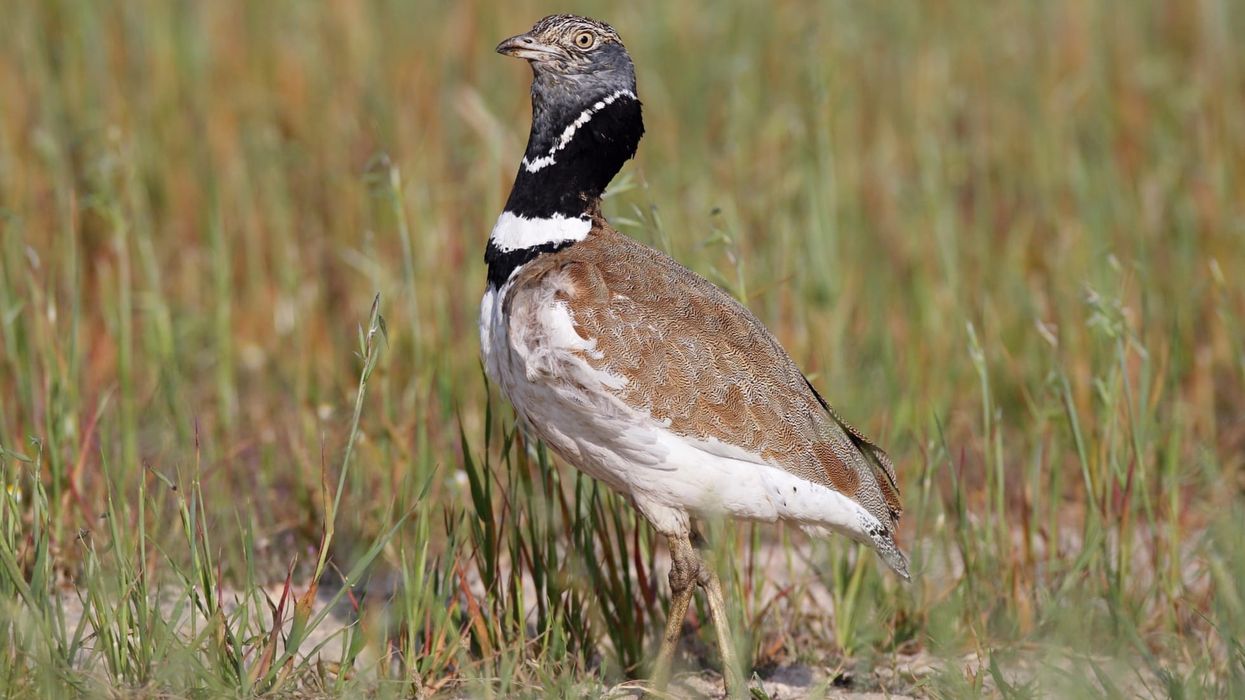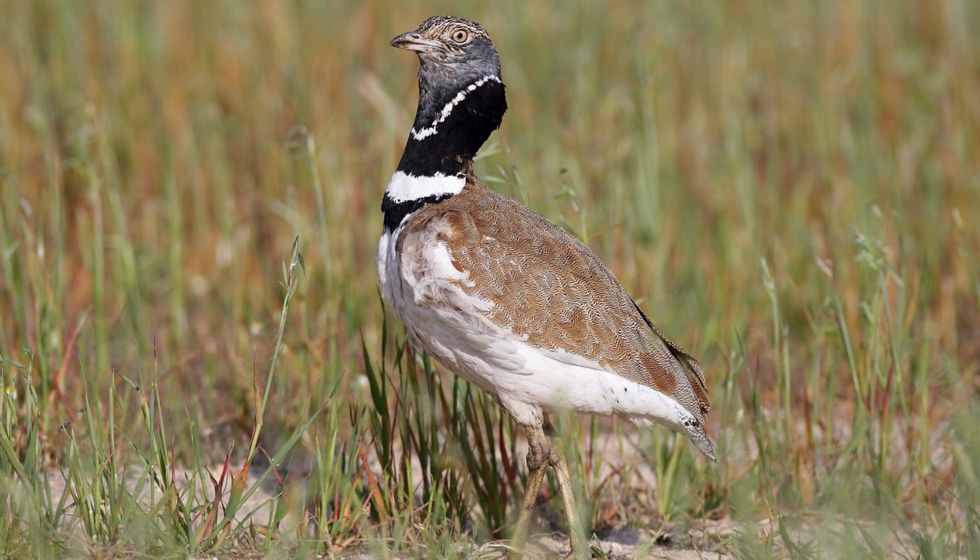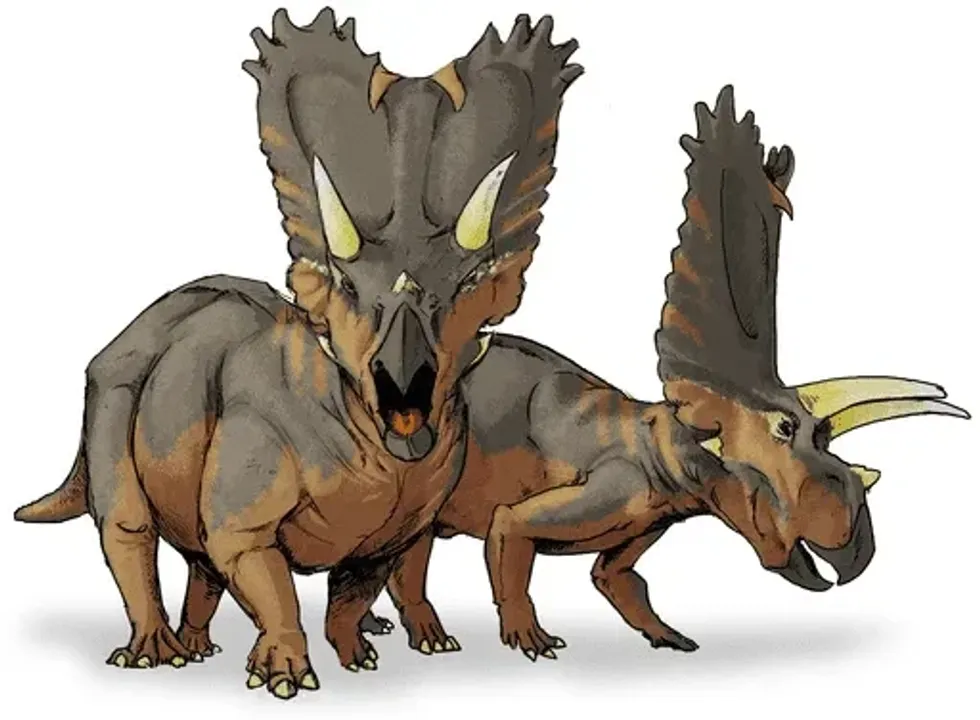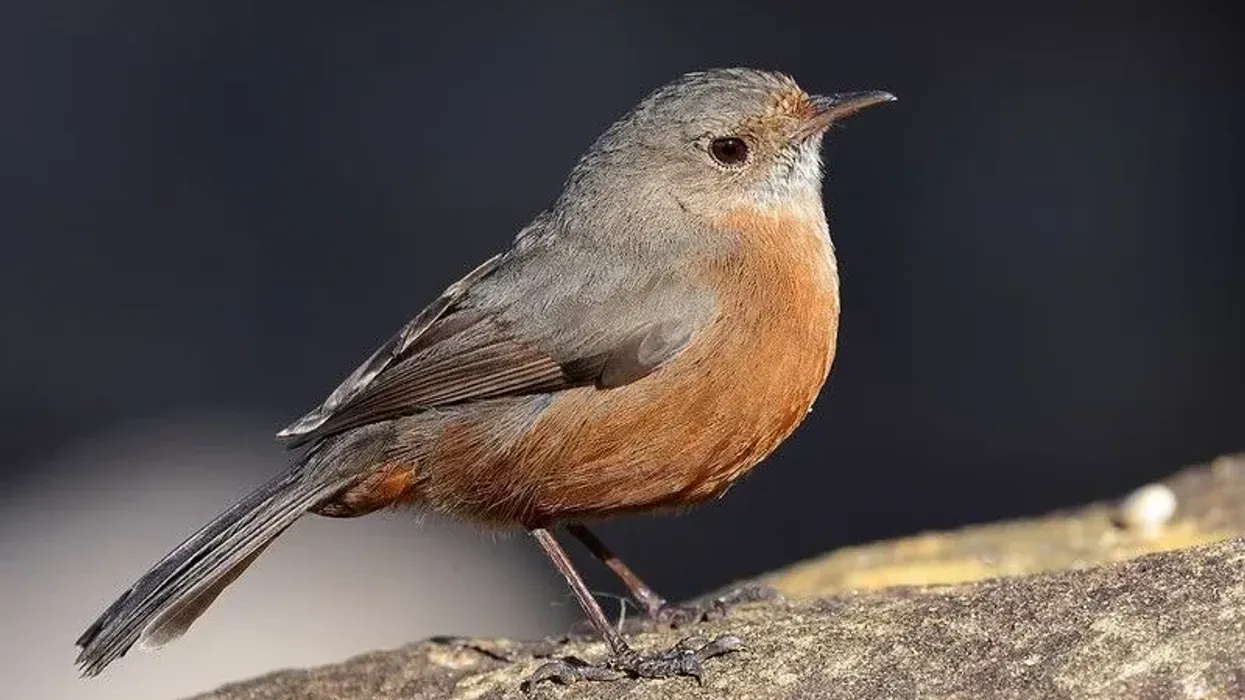The little bustard (Tetrax tetrax) is the only species of the genus and are known to live in grasslands. These birds are mainly resident of south of Europe, western and Central Asia, and North Africa and the populations of this species are declining due to habitat degradation. They can sometimes be spotted breeding in France.
The two sexes of these birds have distinctive features. Breeding males have a bluish-gray body and black neck band which then progresses into a white collar.
The white collar is seen to be of a v-shape, which gives the males a rather regal look. The female, on the other hand, lacks such white or black bands. They are brown throughout with speckles of white and black, and large wings.
These birds are also characterized by their slow walk as they search for prey or seeds on foot. Little bustards are known to walk without a single sound, except for during the breeding season when they have a lot to display.
For more relatable content, check out these Andean flamingo facts and common goldeneye facts for kids.
Little Bustard Interesting Facts
What type of animal is a little bustard?
The little bustard is a bird species that is Extinct in several places such as in central European countries.
What class of animal does a little bustard belong to?
In scientific terms, the class that is associated with the little bustard is Aves. An simpler term for this class is birds.
How many little bustards are there in the world?
There are no records or studies that can tell us the exact population size of the little bustard bird, however, the conservation status of this species suggests that the population could decline in the near future.
Where does a little bustard live?
Little bustard birds are mainly resident of open grassland and agricultural sites. They live in large flocks throughout this range of habitat and scour the ground in search of insects, seeds, or plants.
What is a little bustard's habitat?
The little bustard range map extends from southern Europe, to Central and western Asia and North Africa. Several European populations of the bird such as in Hungary are now Extinct due to habitat loss and new agricultural techniques. These birds are rarely spotted in France, although, they are known to breed there.
Who do little bustards live with?
Little bustards are colonial birds, especially during the winter season when they form large flocks or groups. Birds of this ground-dwelling species can be found in large numbers as they wander through the grassland on foot.
How long does a little bustard live?
The average lifespan of the little bustard (Tetrax tetrax) is around 10 years which is considerably more than other bird species of similar size and behavioral display.
How do they reproduce?
The breeding season of this bird species is one of the most beautiful sights! A breeding male little bustard courts the female by an elaborate display that includes stomping, flapping wings, a short flight, and a nasal sound. The females are also chased in flight during the breeding season.
The females of the species lay around one to six eggs each breeding season. The nest is usually a depression on the ground with a cover made of leaves. The incubation period is around three weeks, during which the females take care of their eggs alone. The male parents remain in close proximity.
You may be fortunate enough to see a breeding little bustard in France if you happen to be in that part of the world during the spring season.
What is their conservation status?
According to the IUCN, the conservation status of the little bustard bird is Near Threatened. The populations of this bird species are declining due to habitat degradation. New agricultural methods deny this species of the main elements of their diet, thereby pushing them to extinction.
Little bustard conservation efforts include protecting them from hunting and unnecessary habitat degradation.
Little Bustard Fun Facts
What do little bustards look like?
The little bustard is a rather beautiful species. One of the rare features of this species is that the two sexes have distinctive features, and even breeding and non-breeding males can be distinguished.
A breeding male of this species has a rather dramatic set of features which includes a patterned collar on the neck. The neck of the breeding male has a black band, which continues into a white colored collar of V-shape.
This neck pattern may be symmetrical or asymmetrical, but it is definitely spectacular. The body and head is of a bluish-gray color which compliments the magnificent glamour of the breeding season.
Both the males and females have a predominantly brown and heavily speckled body and head. The female has cream or buff underparts and the tips of the feathers are black.
The non-breeding male lacks bands on the neck and has similar features as the females of the species. The legs of these birds are pale yellow, so are the eyes. The color continuity is truly amazing.

We've been unable to source an image of a Little Bustard and have used an image of a Great Bustard instead. If you are able to provide us with a royalty-free image of a Little Bustard, we would be happy to credit you. Please contact us at hello@kidadl.com.
How cute are they?
There can be no doubts that with a gray head, black neck, magnificent slow walk, and a large wingspan, that breeding male little bustards are adorable. The description of females and non-breeding males also tells us that they are cute due to the brown color of their head that runs throughout the body.
How do they communicate?
The little bustard species is mostly known to be silent. The only call that you may hear is when a male is courting a female. The call is somewhat like a nasal huff.
How big is a little bustard?
The average length of a little bustard's body is around 15.75-17.72 in (40-45 cm). This means that these birds are roughly the same size as the common murre and three times the size of an average vesper sparrow!
How fast can a little bustard fly?
While the exact flight speed of the little bustard is not known, we do know that their wingspan allows a stable and beautiful flight. When in flight, these birds can be observed to be flapping their wings in short, shallow motions which is a magnificent sight to behold.
How much does a little bustard weigh?
The average weight of the little bustard is around 24.67-34.38 oz (700-950 g). These birds are thrice as heavy as mountain quails and more than twice as heavy as red owls.
What are the male and female names of the species?
There are no different names for the two sexes of little bustards, although there is a considerable difference in their physical description. We can call them a male little bustard and a female little bustard. Also, there can be the breeding male little bustard and the non-breeding male little bustard, and you can tell these apart by their appearance.
What would you call a baby little bustard?
The baby little bustard (Tetrax tetrax) is called by the same name as all juveniles of the class Aves, nestlings or chicks.
What do they eat?
The diet of the little bustard (Tetrax tetrax) species consists of insects and small invertebrates. However, these omnivores also readily feed on berries, fruits, and other plant parts.
Are they dangerous?
There are no records that would suggest that little bustard birds are dangerous to humans or other animals. They are peaceful animals that survive solely on insects and plants.
Would they make a good pet?
It is unlikely that this species would be able to adapt to domestic settings. This species that can be found in France and other parts of Europe, North Africa and western Asia is best suited to the wild, where it can live alongside the populations of its species.
Did you know...
Little bustard hunting is one of the reasons why this species is threatened.
The head of a little bustard is brown in color and has white colored markings.
Little bustards do not migrate, however, the northern populations do migrate during the winter season.
This grassland-loving species can be seen throughout France as they breed there.
Are little bustards endangered?
The little bustard (Tetrax tetrax) is Near Threatened. This species is endangered due to factors such as hunting and habitat degradation.
What role do little bustards play in the ecosystem?
Little bustards are an important part of the ecosystem since they help to control the population of insects and other invertebrates that live on the ground and may be harmful for crops. They also help in the dispersal of seeds.
Here at Kidadl, we have carefully created lots of interesting family-friendly animal facts for everyone to discover! Learn more about some other birds from our Australian pelican facts and sarus crane facts pages.
You can even occupy yourself at home by drawing one on our free printable little bustard coloring pages.









